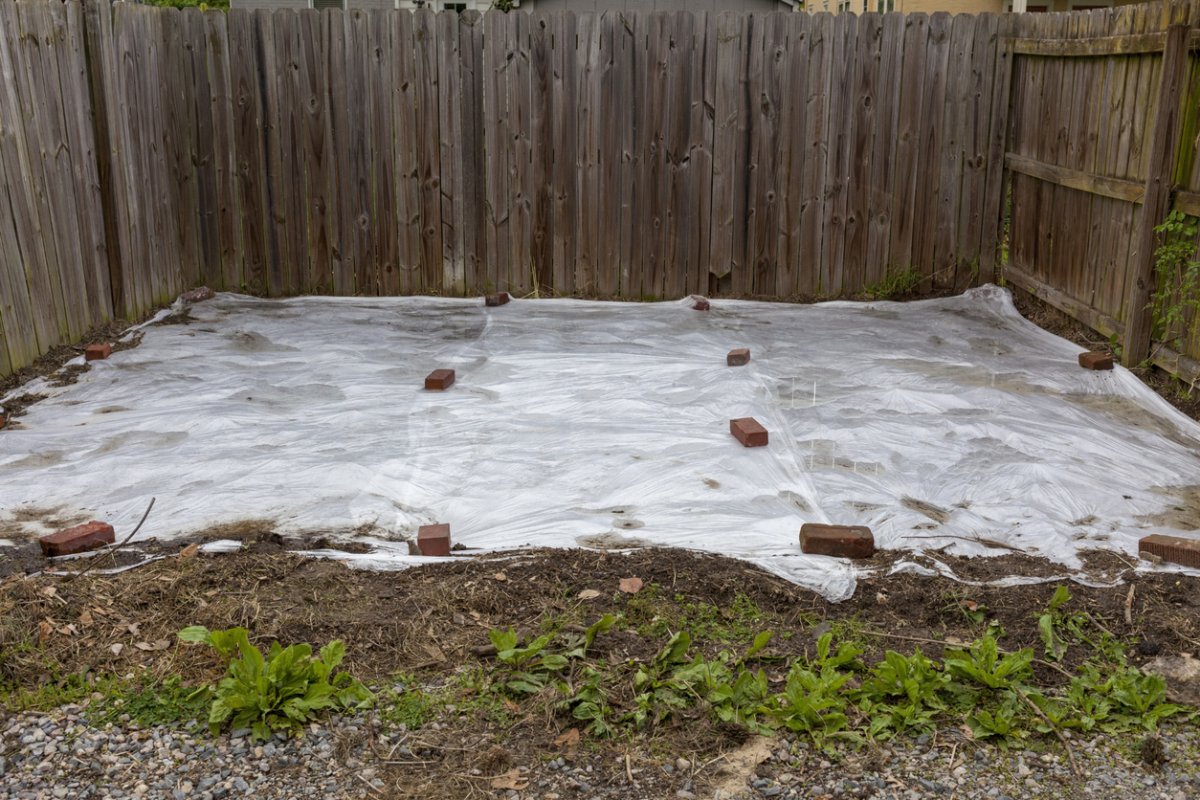Ta-da! That’s what my daughter says when she presents a magic trick. Pull a coin from behind my ear, and you’ll soon hear “ta-da!” A rabbit pulled from a hat is accompanied by expansive gestures and, of course, a hearty “ta-da!” So what’s that got to do with soil solarization? Well, it’s kind of like magic, and deserving of its own little “ta-da!”
Do you have out-of-control weeds every year? Soil solarization and ta-da! No more weeds. Did you get hit with a severe soil-borne plant disease? Guess what can take care of that for you?
There are also some potential disadvantages that I’ll touch on. But first, what is soil solarization?
Discover 7 top tips for growing, harvesting, and enjoying tomatoes from your home garden—when you access the FREE guide The Best Way to Grow Tomatoes, right now!
Soil solarization is hot stuff
The Texas A&M Agrilife Extension describes soil solarization as an environmentally friendly method of controlling insects, weeds, and bacteria. “The process involves covering the ground with a tarp […] to trap solar energy. The sun heats the soil to temperatures that kill bacteria, fungi, insects, nematodes, mites, weeds, and weed seeds.”
The trick is that the soil needs to either hold moisture, such as clay soil, or you need to water it first. It’s the combination of steam and heat that makes soil solarization so effective. The process is simple enough:
- Clean and level your soil.
- Soak the ground with water.
- Tightly cover the area with a transparent plastic sheet or tarp and secure it by burying the edges in the ground.
- Wait. It can take four to six weeks for the process to work.
So what are the benefits? What are the drawbacks? Here are some reasons you may or may not want to try soil solarization.
- Aside from purchasing the plastic, it’s a free method of pest, pathogen, and weed control.
- The process is solar-powered, so there are no chemicals or runoff to worry about.
- Soil solarization improves soil quality as the heat helps break down organic material into nutrients more readily absorbed by plants, according to the University of California Division of Agriculture and Natural Resources.
- The University of California also reports that solarization controls pathogens, “including those that cause Verticillium wilt, Fusarium wilt, Phytophthora root rot, Southern blight, damping-off, crown gall disease, tomato canker, potato scab, and many others.”
- Solarization seems to have long-term success in controlling weeds.
Those are all excellent reasons to try soil solarization; however, there are some definite drawbacks.
- Because solarization relies on heat, it’s more effective when the overall air temperature is higher. While you may be able to find success with winter solarization in warmer areas, those in cooler climates likely won’t be able to take advantage of solarization until spring or even early summer.
- Since you need high temperatures and the process takes up to 6 weeks to be most effective, soil solarization will put a damper on your spring gardening plans.
- While soil solarization can kill or control many pathogens and harmful pests, the heat generated can also kill beneficial insects and organisms.
Is soil solarization magic? It may very well be, especially if you have recurring issues with plant pathogens or you’re completely overwhelmed with weeds. Should you try it? As long as you’re aware of the drawbacks, it could make your future gardening endeavors much more successful. When you’re done, you can test your soil and see how it went.
Have you tried soil solarization? How did it work for you?
Discover 7 top tips for growing, harvesting, and enjoying tomatoes from your home garden—when you access the FREE guide The Best Way to Grow Tomatoes, right now!

8 replies on “5 Reasons to Try Soil Solarization This Year (and 3 Reasons Not To)”
My neighbour put down clear plastic 2 years ago and it’s still there – not only is it an eyesore it’s on our fence line and I’m concerned it could affect our side of the fence. What kind of damage could this cause if left long term like this.
I used to cover my planting beds with plastic when they were not in use over winter. Come Spring, when I uncovered the beds, my beds were weed free, also, UNFORTUNATELY, earthworm free. Never again!
Can you use black plastic rather than clear plastic. I would think that would heat better.
Transparent plastic works best because it lets the rays of the sun will pass through and get trapped to heat the soil below. Black plastic can be less effective because it absorbs and deflects some of the heat, rather than trapping it as the clear plastic does.
Hmmm. The article says transparent plastic. suspect it is because the sun heats the soil to high temperatures; therefore killing the organisms as well as the weeds.. wouldn’t hurt to set aside a small patch of the garden and give it a try.
I have a dog who likes to run in the back yard. Will she burn her pads on the black plastic
It doesn’t take long for a dog to burn its paws – typically 1 minute on pavement that is ~125F. If you’re using black plastic try checking the temp with an infrared temperature gun.
I have a dog who likes to run through my garden in my backyard. Will she burn her pads on the black plastic